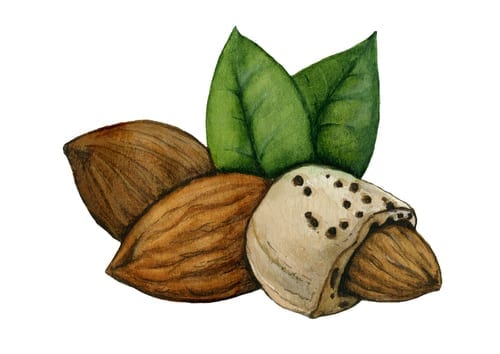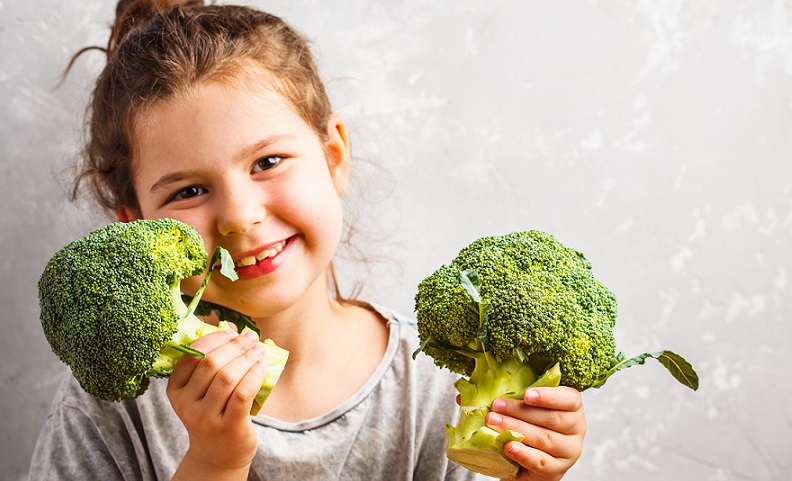Nutrient dense diet tips flood the web. It’s the new way to eat. But actually, it’s the old way to eat. It’s how people ate in the days before sodium-laden, sugar-laden, fat-heavy processed foods. And it’s how we’d eat now if we weren’t so lazy.
The nutrient dense diet is simple, and as a matter of fact, it’s not a diet at all but a way of life. It boils down to this: eating foods that nourish the body and shunning those that don’t.
What does that mean, exactly? It means that before you put anything in your mouth, you stop and think if it’s as wholesome as possible. It means changing the way you cook so that if you’re planning a side dish, you choose brown rice over white, whole wheat pasta over regular, whole grains over refined. It means NOT EATING foods that aren’t good for you, because there’s always a choice. You can always eat something in which every calorie provides precious nutrients, instead of grabbing that bag of chips and rationalizing to yourself that potatoes are a vegetable.
Nutrient Dense Diets: More Planning
I’m not going to kid you: it’s a lot harder to eat a nutrient dense diet. I know because I began eating a nutrient dense diet just after the Passover holiday ended. It takes more planning, careful shopping, and means more work in the kitchen, too. It also takes discipline to say no to the non-nutritious foods I’ve grown to love.
Now if you think about it, you fed your infant this way—fed him a nutrient dense diet. You prepared wholesome meals for your baby and never would have thought of giving him junk. That is, until he grew a bit bigger and you thought it would be cute, for instance, to give him a taste of cotton candy, or ice cream, or a French fry. And things went downhill from there.
Once we get a taste of high calorie foods, the brain develops a thing for those foods. It’s a harbinger to the caveman days when surviving meant packing in as many calories as possible at any one time, because cavemen didn’t know when their next meal would be. It all depended on the day’s catch or hunt and whatever produce could be foraged in the wild.
Sensory Pleasure
Foods with large amounts of salt, sugar, combined with built-in fats also provide lots of sensory pleasure and when we eat them, our brains tell us to keep coming back for more. Unlike in the days of our cavemen ancestors, however, the food never runs out. We can always buy another bag of chips. Hence, the problem of childhood obesity in America has, if you’ll excuse the pun, grown enormously, with one in every six children qualifying as obese.
Fast food restaurants and junk food makers have latched on to this notion that the brain is attracted to high-calorie food. They pack in the calories in the food items they plug and layer the flavors, using this time-proven formula to create addictive foods. It’s just that simple.
Nutrient Dense Diet Vs. Processed Foods
Adopting a nutrient dense diet, means shunning popular processed foods and snacks. In so doing, we go up against years of food and marketing research underwritten by mega companies determined to sell you products. Fresh, home-cooked brown rice with stir-fried chicken breast and broccoli florets is going to have a hard time competing with a Big Mac and fries. It’s also going to have a hard time competing with packaged prepared versions of the same thing because your homemade version won’t have all the sodium and artificial flavors to which our tongues have grown accustomed.
And I’m going to level with you: the nutrient dense diet is not something your child will automatically (if at all) embrace.
But as parents, we have a duty to try and provide our families with a nutrient dense diet, and especially our children who are still growing and learning. They need the nutrients provided by wholesome foods to be healthy and do their best in school. Moreover, getting children used to a nutrient dense diet, sets them on the road to a healthier future as adults, too. Whole foods have antioxidants and other good things that protect us from illnesses like cancer.
You just can’t get that in a Big Mac.
Nutrient Dense Diet Superfoods
Need some ideas on how to get your children started on a nutrient dense diet? Here are some foods to try adding to family meals:
Basil
Basil is jam-packed with good things like antioxidants and vitamins A, C, and K. The herb is also a great source of iron, calcium and potassium and can aid digestion. If your child is the adventuresome type, use basil to whip up a pesto sauce for pasta or chicken breasts. If, on the other hand, your kid freaks out at the sight of anything green, mix it into meat balls. He’ll never know it’s there.

Black Beans
Beans are a nutrient dense diet must and a fantastic source of protein, fiber, and calcium—things that kids may not get enough of on their own. The darker the bean, the more nutrients provided. And by the way, beans fight high cholesterol and heart disease. Make refried bean wraps or quesadillas or set out some black bean hummus with carrot sticks for some satisfying crunch.
Blueberries
Blueberries are way up there on the list of healthiest fruits. The plump little guys are filled with antioxidants to protect the heart, prevent diabetes, and improve brain function. Now new research shows that blueberries can help take off belly fat, which is linked with obesity and metabolic syndrome. Toss blueberries into salads or a bowl of granola, eat them for dessert, or make a blueberry smoothie with yogurt and cinnamon (add honey for children over the age of one year) for a cool, nutritious treat.

Cabbage
Cabbage has a milder flavor than most greens and kids like it because of the crunch factor. This superfood protects the body against cancer and is good for the digestion. Make an Asian cabbage and noodle salad, something guaranteed to please.
Cinnamon
Cinnamon should be a part of every nutrient dense diet. The spice stabilizes blood sugar to prevent mid-morning slump. Add cinnamon to anything you can: baked goods, cereals, yogurt, and desserts.

Cocoa
We’re not talking hot cocoa here, but cocoa powder, which is chock full of flavonoids, good for blood pressure, the heart, and guarantees a good checkup at the dentist to boot. Cocoa may even help protect your child’s skin from sun damage. Avoid Dutch process cocoa if you want to get the health benefits from flavonoids, and add cocoa to pancake or waffle batter, French toast, or um, just eat your chocolate straight up. 70% cocoa and up is best for the nutrient dense diet.
Eggs
Vitamin D is something we mostly get from the sun. But eggs are a natural food source for vitamin D, which aids the body in absorbing calcium. Eggs are a great protein source and kids who eat eggs for breakfast are less likely to suffer hunger pangs in the classroom way before it’s time for lunch. Eggs keep kids (and adults) feeling full longer.
Fruit
Blueberries were mentioned above, but really, any fruit is good for children. Each type of fruit has its own nutritional benefits and of course, fruit offers a sweet form of dietary fiber. Try to vary the fruit you serve your child to get the full complement of vitamins and minerals.
Greek Yogurt
Greek yogurt isn’t just a fad—it’s really an almost perfect food and certainly belongs in the nutrient dense diet. The white stuff has probiotics, a kind of good bacteria that boosts the immune system and aids digestion. Greek yogurt also has more protein and less sugar than any other type of yogurt. Use a healthy sweetener, for instance honey in kids over one year, or try some maple syrup, to make Greek yogurt nutritious and delicious.

Milk
Dairy products provide protein and calcium: fuel for the brain, bones, body, and teeth. Fortunately, kids love cereal and melted cheese, so it’s not hard to get dairy into their diets!
Nuts
Nuts have the good kind of fat that fights high cholesterol and protects the heart. Kids also need healthy fat for their growth and development. A handful of almonds as a snack can give your child extra energy for the morning ahead. Eating a spoonful of peanut butter before bed can prevent mid-morning slump.

Oatmeal
It’s proven: kids who eat oatmeal for breakfast pay better attention in school. Oatmeal has lots of fiber so it takes a long time to digest, which keeps kids energy levels steadier over the course of the morning.
Salmon
Salmon has those special omega-3 fats that are good for the heart and brain. Some say this fish-derived fat even serves as a treatment for ADHD. Salmon also fights inflammation and besides, it’s delish and versatile, so definitely belongs in the nutrient dense diet. Chances are, you won’t have a hard time finding a way to prepare salmon so your child will eat and enjoy this beautifully pink fish. Salmon burgers will always be seen as a treat.
Tofu
Soy has low-fat protein and calcium and it wards off cancer. Make a stir-fry with tofu cubes or whip up silken tofu to make smoothies. Looking for a new snack food? Try boiling edamame (green soybeans) in the pod and after draining, toss in some soy sauce and sprinkle on some salt. Kids love shooting them out of their pods.They’re addictive!
Tomatoes
Tomatoes fight cancer, but mostly when they’ve been cooked long enough to release their lycopene. That means red sauce. Yup. Red sauce belongs in the nutrient dense diet. Luckily, kids love anything with red sauce: lasagna, tacos, spaghetti and meatballs, chili, and of course, PIZZA. There’s a reason that so many tomato recipes include olive oil, which helps the body absorb more tomato nutrients.
What’s your favorite superfood for making sure your child eats a nutrient dense diet?

My kids love fruits, soups and even love munching on raw herbs like Mint, Holy Basil and Curry Pata. But I seriously doubt they will choose broccoli over say fries. Thank you 4 sharing this article.
I thought you might like to read this http://ketchupmoms.com/2015/07/21/2-kitchen-garden-herbs-your-kids-can-so-benefit-from-mint-and-holy-basil/
Very interesting blog piece, Charu. It would be fun to interview you for the blog. Let me know if this interests you.